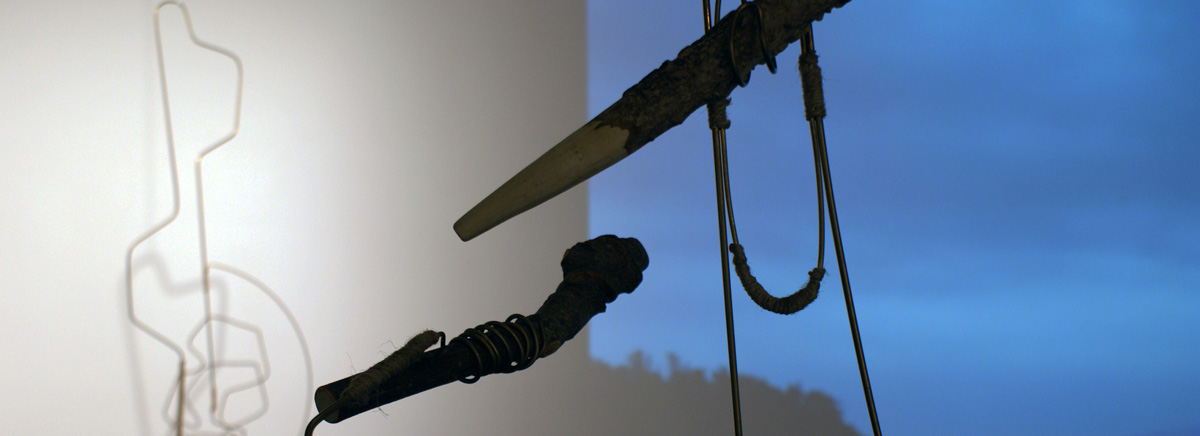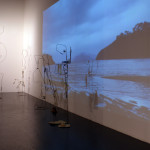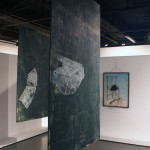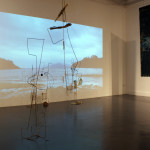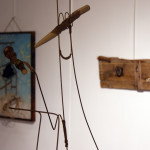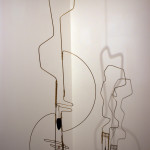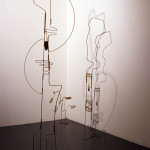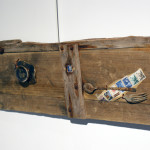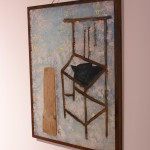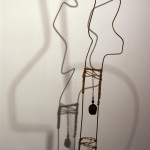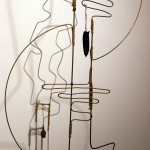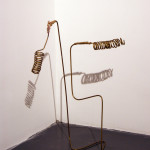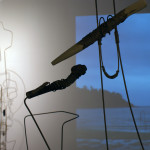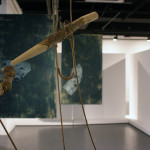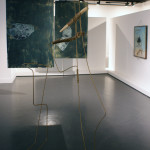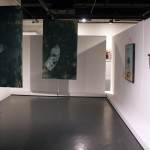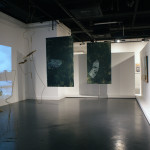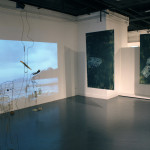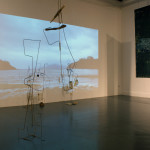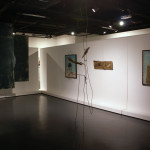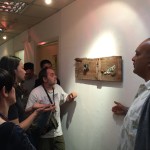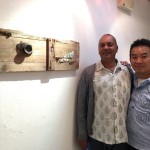The swirl and flow of memory are represented by brushstrokes of dark ink, stark and intense, whereas the thread is the linearity leading to our hidden memory, which is represented by the intricate fabric-like texture, deliberately portrayed to be standing out from the rest of the painting.
The broken rope represents the inconsistent state of memory. The rope is more visible in the front view, suggesting that the older generation has a clearer thread of memory compared to the modern generation. The blue lines that almost merge in the same background colour represent the linear thinking of this generation. Unlike the older generation, we no longer have the habits of remembering things clearly and we can no longer tell memory from routine.
The blurred and fading colour represents the memory of the modern generation which is not as clear as that of its older counterpart due to advancement in technology. In the old days, when technology is less advanced, people tended to remember things by heart. But nowadays, everything can be photographed and scanned easily at the click of a button. We thus no longer need to store things in our memory.
No matter it is the old or the modern generation, it is hard to preserve complete memory because some lines are hidden at the back (mentally in our mind or physically at the back of the artwork), in much the same way as memories that are hidden, repressed, or simply, lost due to motivated forgetting, or the work of time. Memory tends to appear in incomplete forms.
While the intangible form of memory is illustrated in the wire sculptures through their shadows, the tangible form of memory is explored through the physical forms of the abstract art on the board. It would be ideal to have the shadows of the wire sculptures projected on these boards to give a complete picture of what memory is.
